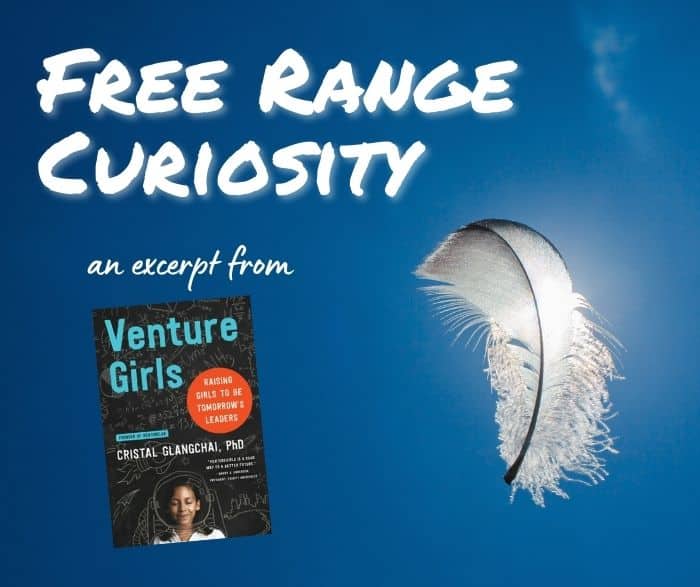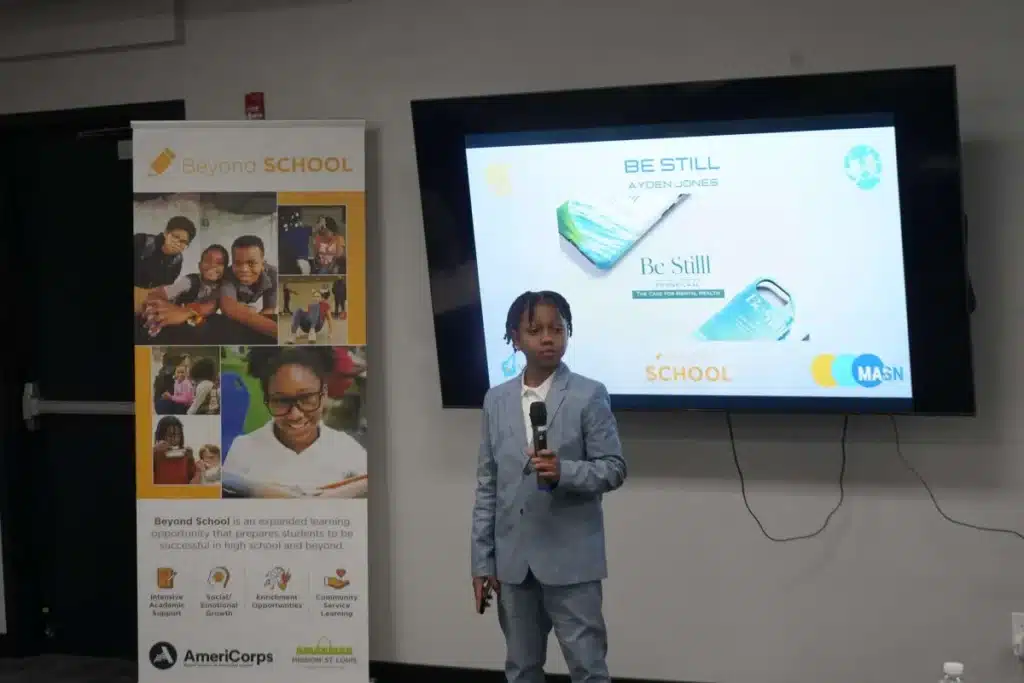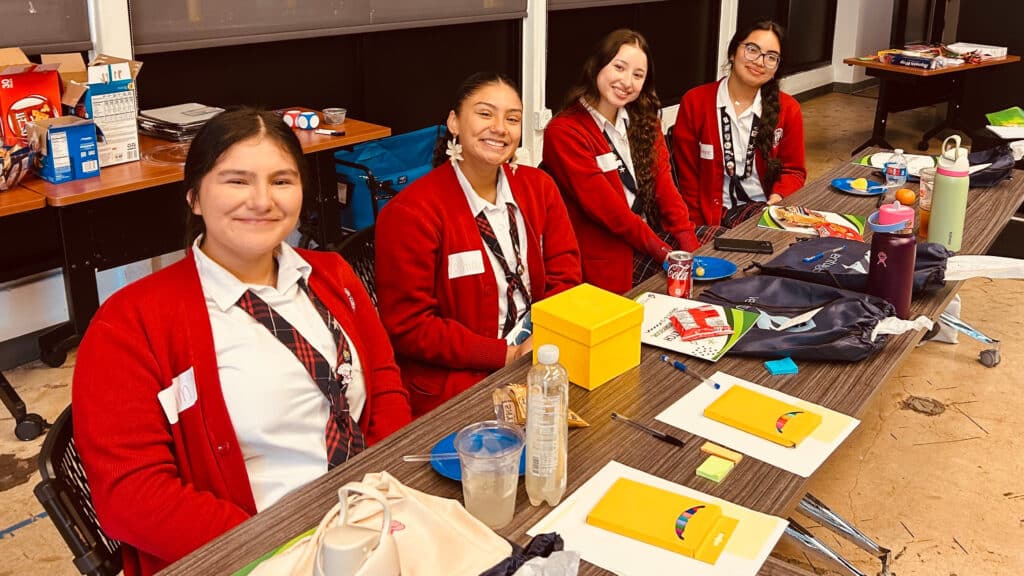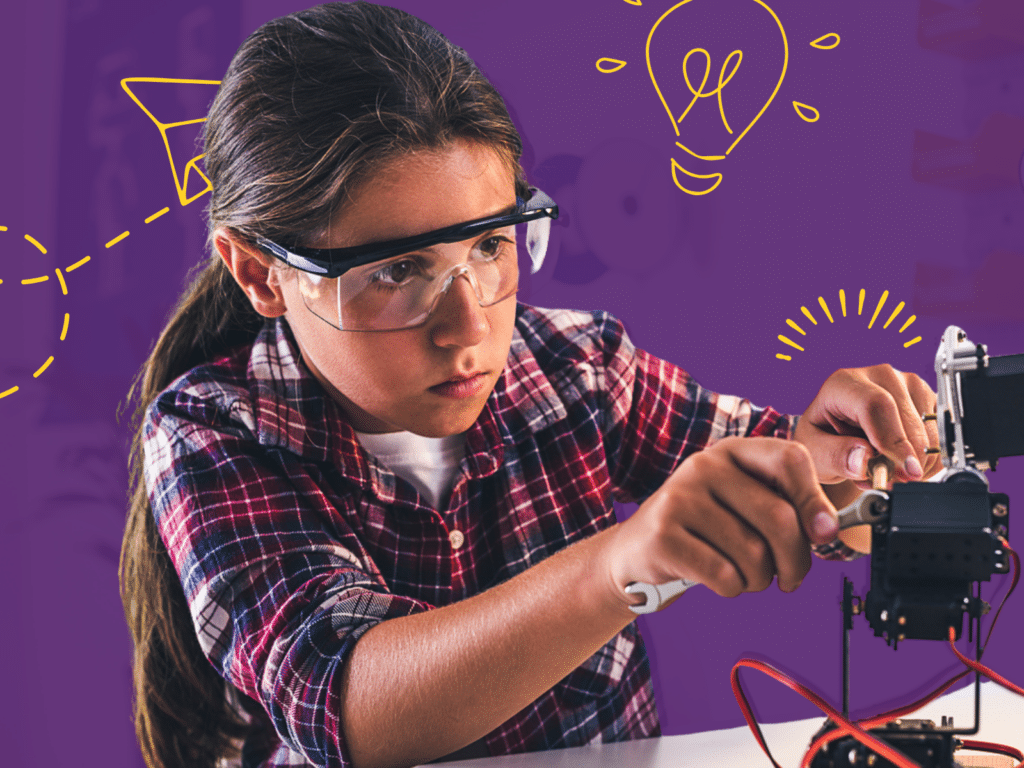Curiosity can inspire incredible new ideas, and practicing curiosity doesn’t have to be done in a structured setting. For an example of everyday curiosity encouraged and explored, dive into this excerpt from VentureGirls, written by VentureLab’s founder, Dr. Luz Cristal Glangchai:

A curious girl can be comfortable and confident in environments of uncertainty. She has a lifelong strength that must come from within and cannot be bestowed from outside. Curiosity enables her to embrace her sense of wonder and to become a critical thinker, unafraid of posing questions and primed to take calculated risks.
During my childhood, my mother would take my sisters and me on nature walks to a local creek to look for fossils, or to a field in South Austin to look for meteorites. Sometimes at night we would just lie in the driveway and look up at the stars. All of these unstructured activities developed my curiosity. A curious mind can find things to explore almost anywhere, especially outdoors. I call it free-range curiosity.
Starting with a feather
Take something as simple as feathers that have fallen from a passing bird.
Simply by beginning to look closely at feathers, a girl can become more observant. I’ve observed this effect ever since my daughters, Maribel and Cate, were in preschool. When they would pick up feathers from the ground, we’d examine them together and notice small differences: perhaps one feather might be iridescent in the sunlight, while another is tipped in white.
How can something as simple as a feather be such a powerful stimulant for exploration and thinking? Because it prompts a girl to ask questions and to care about the answers. Further research in books or on the Internet can open up new doors of discovery. Curiosity about feathers can lead to questions about aeronautic design, evolutionary adaptation, mechanical engineering, fractals, and materials science.
Learn more about the mindset of curiosity and how to practice curiosity in our Mindset of the Month post!
She may wonder whether the leading edge of feathers in flight is the narrower side, and why. A question like this can lead a girl to explore the websites of the Cornell Lab of Ornithology and the National Audubon Society, rich with images and information. She can listen to their recorded bird calls. She might watch a PBS Nature documentary about birds around the world.
As a child’s mind map of feathers grows more complex, her brain’s neural pathways multiply. Following her curiosity where it leads is an essential step toward mental growth.
Introducing entrepreneurship
Now overlay entrepreneurial learning. When encouraged to think like an entrepreneur, a girl whose curiosity has been stimulated by studying feathers may begin to wonder how the world could be made safer for threatened bird species.
What can she do to improve the world for birds? With this shift, she may explore becoming a social or environmental entrepreneur. The problem of preserving our endangered bird species might become her life’s work. Or she may begin to wonder whether the incredible properties of feathers could be applied to “maker” projects.
Could the remarkable lightness and strength of feathers, which make flight possible, be adapted to some new kind of product? It is the beginning of envisioning a career that could in some way improve the world—all beginning with a few windswept feathers.
This is the essence of entrepreneurial education: stimulating learning, finding questions to be explored and problems to be creatively solved. It’s not about coming up with the one and only “correct” answer to a question. There are no bubbles to fill in with number two pencils and no essays to be structured just so and graded on their faithfulness to a rigid template.
Want to bring more entrepreneurial thinking to your youth? Sign up for our monthly resource newsletter:





